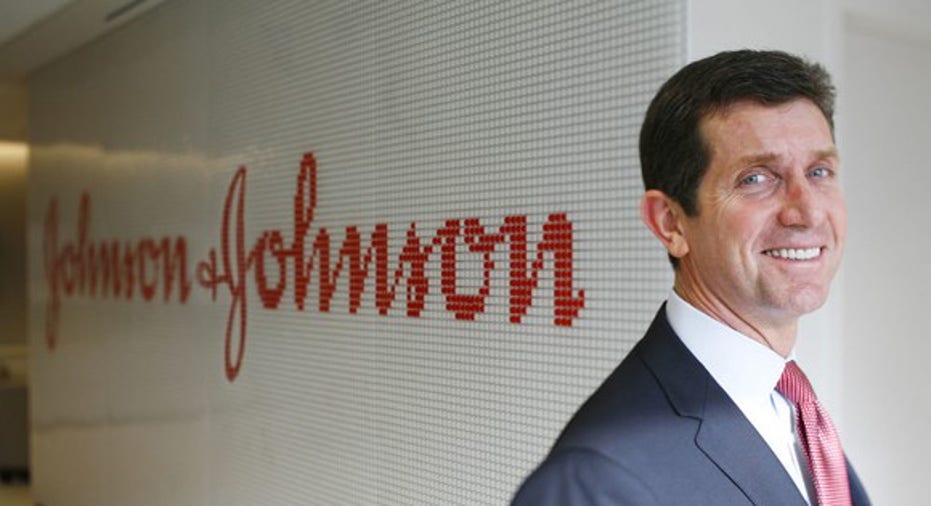Here's Why The Best Is Yet to Come for Johnson & Johnson

It's become common knowledge that most fund managers fail to outperform the S&P 500 index over the long term, but did you know Johnson & Johnson (NYSE: JNJ) has nearly doubled that benchmark over the past 20 years?
That's right. By reinvesting steadily rising dividends from J&J shares purchased in 1997, investors would be sitting on a total return of about 639% versus a 348% total return from the ETF that tracks the broad market.
Johnson & Johnson CEO Alex Gorsky. Image source: Johnson & Johnson.
Past performance doesn't guarantee future success, but there are plenty of reasons to reasonably expect shares of the world's largest healthcare company to continue outperforming the broad market. Here are just a few.
Steadily climbing on many legs
While it's easier to think of Johnson & Johnson as one mighty company, it's actually more than 250 subsidiaries that allow the company to climb year after year. The various businesses fall into three operating segments. Consumer goods and medical devices generate a little over half of the company's total revenue, while the fast-growing pharmaceutical division makes up the rest.
Johnson & Johnson can quickly lop off any of these legs once they fail to pull their own weight. On the flipside, years of steady profitability and a pristine "AAA" credit rating give management easy access to capital that can be used to acquire fresh legs to keep the whole conglomerate moving forward. In 2016 the company completed 13 acquisitions and licensing deals and trimmed eight businesses from its portfolio.
While it's not unusual for large companies to attempt to grow through acquisition, few companies execute this strategy as well as J&J does. Over the past decade, management has only used about 30% of free cash flow to "buy" growth. The rest has been returned to satisfied shareholders in the form of share repurchases and a dividend that it's increased for 54 consecutive years, and the company intends to continue this 70/30 split.
Image source: Getty Images.
Blockbusters galore
For years the biggest muscles pushing J&J's needle forward have emerged from the pharmaceutical segment. For example, the popular arthritis medication Remicade generated $6.97 billion in sales last year.
This aging multi-billion blockbuster has slowed to single-digit sales growth, but more recently launched anti-inflammatory drugs Simponi and Stelara are picking up the slack. In 2016, sales of both grew more than 30% over the previous year to a combined $4.98 billion.
Johnson & Johnson has also had tremendous success with in-licensed oncology therapies. In 2011, the company invested just $150 million upfront for rights to Imbruvica while it was still in the clinical testing stage.Last year it became the first chemo-free option for the most common type of leukemia, and the pills have been flying off pharmacy shelves ever since.Johnson & Johnson's share of annual Imbruvica sales jumped 82% in 2016 to $1.25 billion, and it's expected to contribute more than $5 billion to total revenue each year at its peak.
A more recently launched blood cancer therapy, Darzalex, also took flight last year. Although it launched near the end of 2015, J&J's share of the multiple myeloma therapy's sales hit an impressive $572 million last year. While initial hopes of $13 billion peak annual sales seem unrealistic after a recent cancellation of a mid-stage study that hoped to expand Darzalex's indication, this drug should still prove to be a blockbuster for J&J.
In the pipe
While recent launches are performing well, a handful of potential blockbusters getting close to the goal line could provide more lift. Johnson & Johnson's psoriasis candidate, guselkumab, outperformed the world's top-selling drug, Humira, in a study supporting its application for approval that's currently under review at the FDA. If successful, the drug is expected to generate around $1.2 billion in annual sales by 2022.
Image source: Getty Images.
Johnson & Johnson boasts another potential blockbuster under FDA review called sirukumab. The potential rheumatoid arthritis treatment is expected to generate about $1.1 billion in annual sales by 2022if the FDA application submitted last September receives a thumbs up.
Meanwhile, J&J also has its sights on curing prostate cancer, which is one of the most commonly diagnosed malignancies among American men. Analysts predict that J&J's drug candidateapalutamide could add about $1.4 billion to total sales in 2022, if the late-stage candidate earns an approval for prostate cancer treatment.
With recent drug launches climbing rapidly and plenty of potential growth drivers flowing through its late stage pipeline, it certainly looks like Johnson & Johnson's best days lie ahead.
10 stocks we like better than Johnson and JohnsonWhen investing geniuses David and Tom Gardner have a stock tip, it can pay to listen. After all, the newsletter they have run for over a decade, Motley Fool Stock Advisor, has tripled the market.*
David and Tom just revealed what they believe are the 10 best stocks for investors to buy right now... and Johnson and Johnson wasn't one of them! That's right -- they think these 10 stocks are even better buys.
Click here to learn about these picks!
*Stock Advisor returns as of February 6, 2017
Cory Renauer owns shares of Johnson and Johnson. The Motley Fool owns shares of and recommends Johnson and Johnson. The Motley Fool has a disclosure policy.